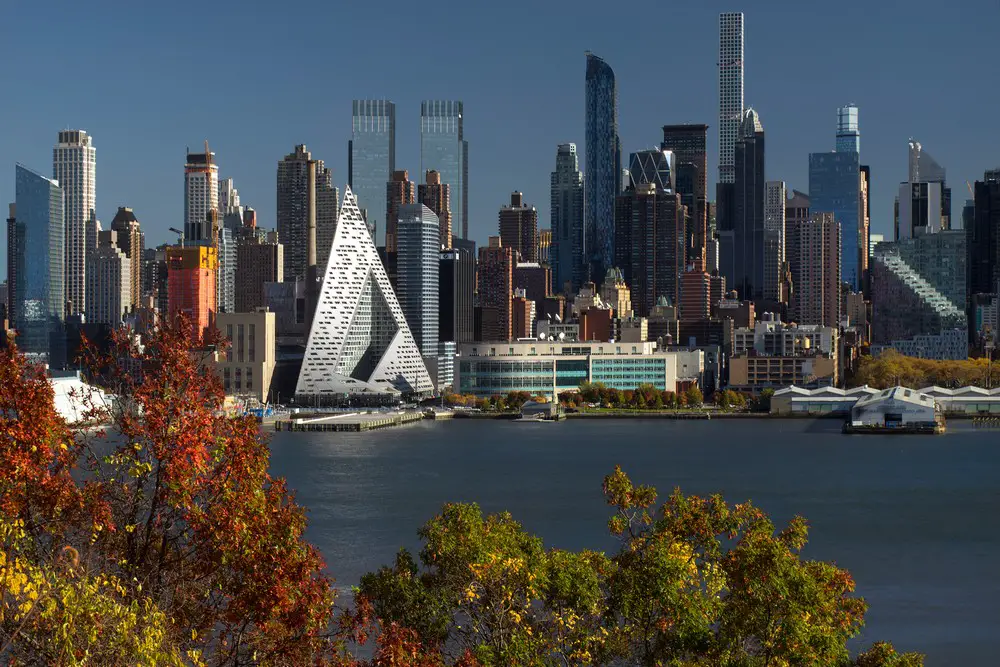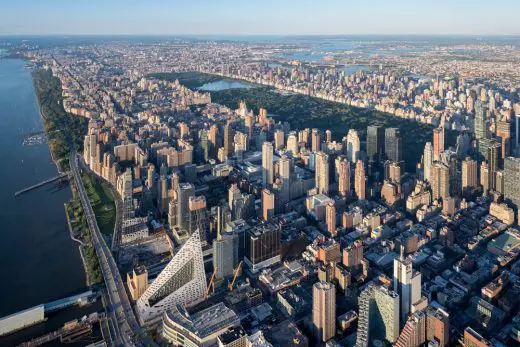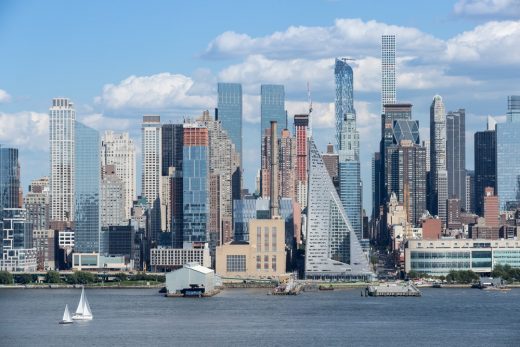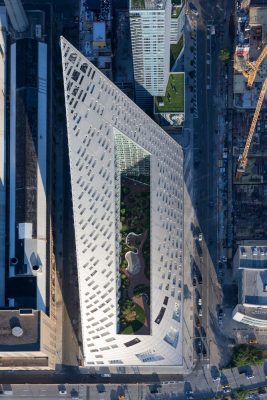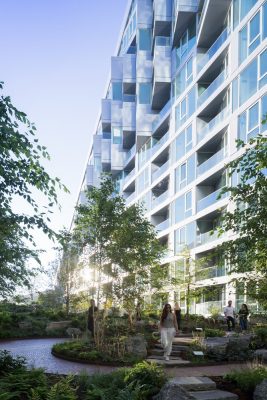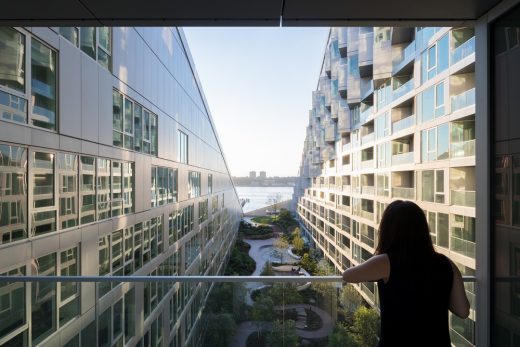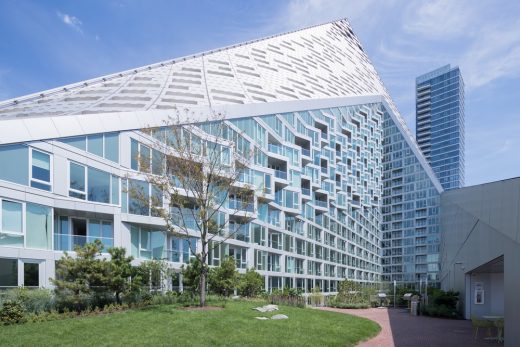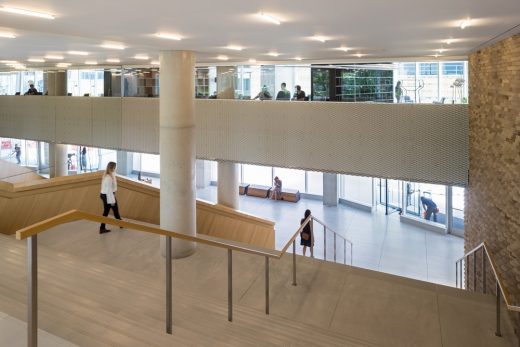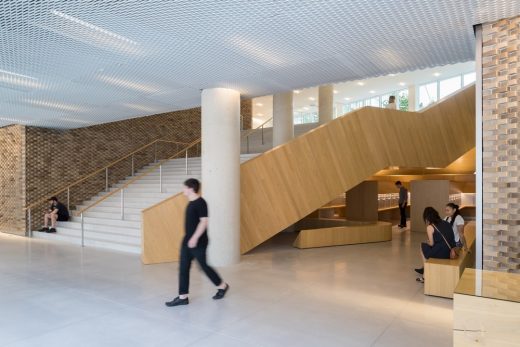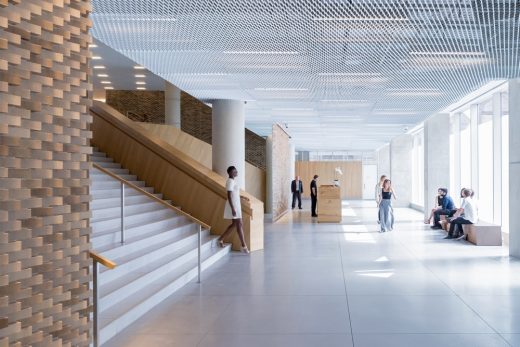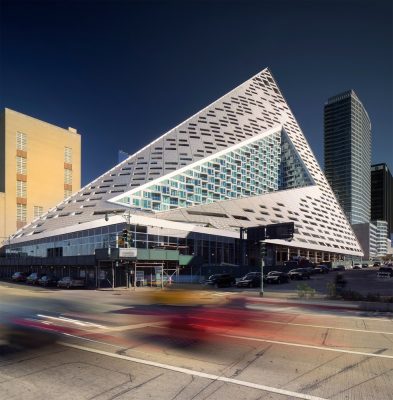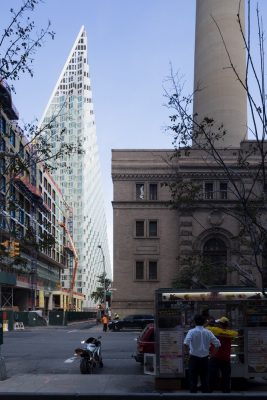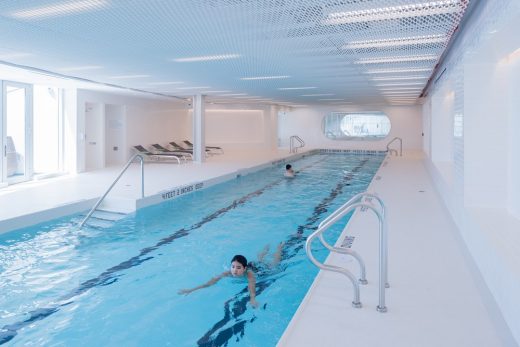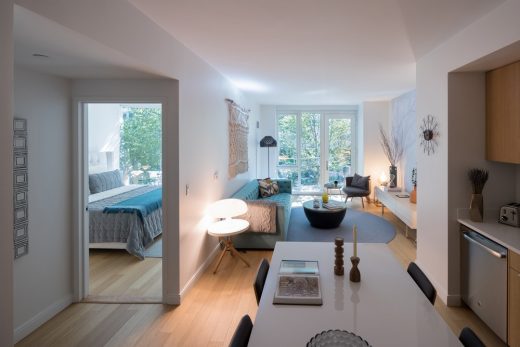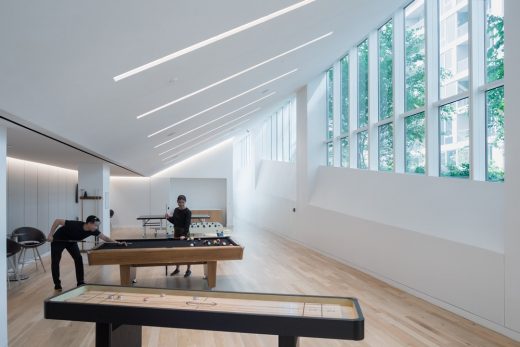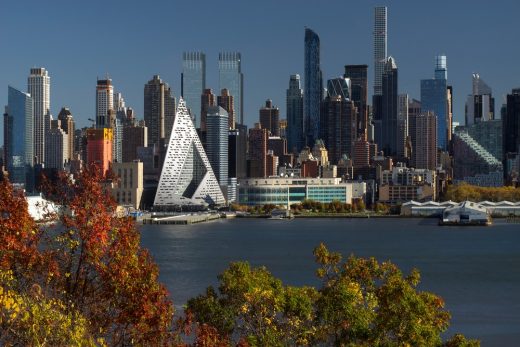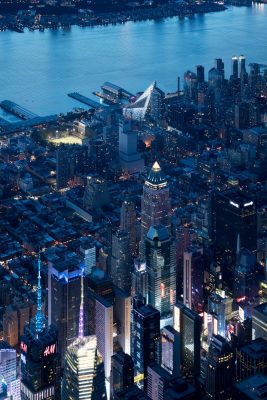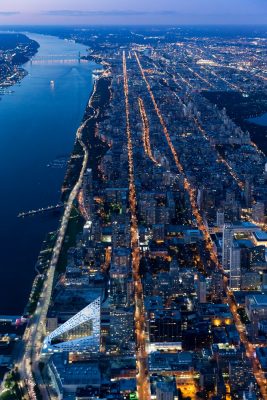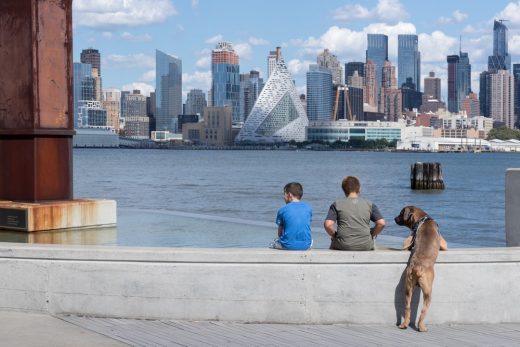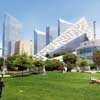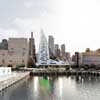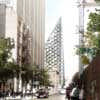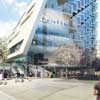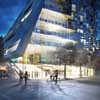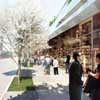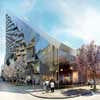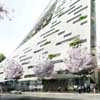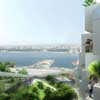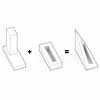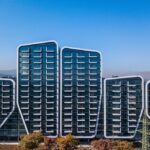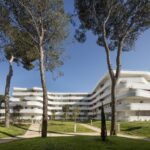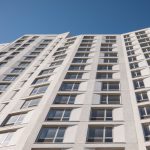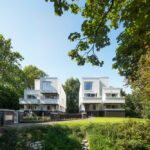VIΛ 57 West Courtscraper, New York City Residential Design Images, Architect, Durst Fetner Project News
VIΛ 57 West Courtscraper in New York
NYC Housing Development: NY Residential Building, USA – design by BIG-Bjarke Ingels Group, architects
Nov 30, 2017
VIΛ 57 West Awards
Emporis Skyscraper Award 2016 Winner
Nov 17, 2016
World Architecture Festival 2016 Finalist
Housing – Completed Buildings
World Architecture Festival 2016
Nov 14, 2016
film for VIA 57 West, new addition to the Manhattan skyline designed by the Bjarke Ingels Group (BIG).
The film is a 360 degree VR experience, shot in 4K with commentary of the design from architect Bjarke Ingels:
Film on YouTube
Production of the film: Squint/Opera
Nov 7 + 6, 2016
CTBUH Awards 2016
CTBUH Awards
Best Tall Building Americas
Sep 12 + 8, 2016
VIΛ 57 West Courtscraper
Design: BIG architects
Location: West 57th Street, New York City, NY, USA
VIΛ 57 West Courtscraper – A striking new silhouette joins the Manhattan skyline
VIΛ 57 West, designed by BIG-Bjarke Ingels Group for the Durst Organization, introduces a new typology to New York City: the Courtscraper. The 830 000 sq ft highrise combines the density of the American skyscraper with the communal space of the European courtyard, offering 709 residential units with a lush 22 000 sq ft garden at the heart of the building.
VIΛ occupies nearly a full city block at the corner of West 57th Street and the West Side Highway, with uninterrupted views towards the Hudson River Park and the waterfront. The Durst Organization commissioned BIG to design a building for the site in the spring of 2010, and construction commenced in 2011. The 32-story building has welcomed residents since May 2016 with the construction completing this Fall. Earlier this year, the Council on Tall Buildings and Urban Habitat (CTBUH) named VIΛ the Best Tall Building in the Americas as part of its 2016 Tall Buildings Award.
“We are very excited about the building, and the activity has exceeded our expectations in terms of velocity and the rents. We always were thrilled with the building but even more so now.” Douglas Durst, The Durst Organization
The VIΛ Courtscraper is a hybrid between the European perimeter block and the traditional American highrise. The building peaks at 450 feet at its north-east corner, thereby maximizing the number of apartments and graciously preserving the adjacent Helena Tower’s views of the river. VIΛ’s volume changes depending on the viewer’s vantage point. From the west, it is a hyperbolic paraboloid or a warped pyramid. From the east, the Courtscraper appears to be a slender spire.
The shared green space at the heart of the block is derived from the classic Copenhagen ‘urban oasis’. The courtyard has the exact same proportions as Olmsted’s park, just 13,000 times smaller – a bonsai Central Park. In a similar accumulation of natural landscapes, the courtyard transforms from a shaded forest in the east, to a sunny meadow in the west. Designed by landscape architecture firm Starr Whitehouse, it features 80 newly planted trees and lawns, and 47 species of native plant material.
“In recent decades, some of the most interesting urban developments have come in the form of nature and public space, reinserting themselves back into the postindustrial pockets, freeing up around the city; the pedestrianization of Broadway & Times Square; the bicycle lanes, the High Line and the industrial piers turning into parks. Located at the northern tip of the Hudson River Park, VIΛ continues this process of greenification allowing open space to invade the urban fabric of the Manhattan city grid. In an unlikely fusion of what seems to be two mutually exclusive typologies – the courtyard and the skyscraper, the Courtscraper is the most recent addition to the Manhattan skyline.” Bjarke Ingels, Founding Partner, BIG.
By keeping three corners of the block low and lifting the north-east portion of the building, the courtyard opens views towards the Hudson River and brings the low western sun deep into the block. While the courtyard is a private space and a sanctuary for residents, it can still be seen from the outside, creating a visual connection to the greenery of the Hudson River Park.
The building is predominantly residential units of different sizes with cultural and commercial program at the street level and the second floor. The lower levels of VIΛ have a strong relationship to the courtyard. The lobby is connected directly to the courtyard via a grand stair which invites residents into the courtyard space.
The generous amenities at VIΛ include lounges and events spaces, a golf simulator, movie screening room, a pool, a basketball court, gym and exercise studios, and game rooms for poker, ping pong, billiards and shuffle board, and are all constructed around the courtyard to create a strong physical and visual connection between the interior and exterior communal spaces.
At the upper levels, the apartments are organized on a fishbone layout, orienting the homes towards the view of the water. Large terraces are carved into the warped façade to maximize views and light into the apartments, while ensuring privacy between the residents.
The material concept for the interior design of the project is “Scandimerican”, another layer of the European-American hybridity. They blend classic modern Scandinavian material sensibility blended with local New York materials. The primary materials of the apartments are oak wood floors and cabinets, and white porcelain tiles in the bathrooms.
As an ultimate union of Scandimerican design, the event spaces feature the Via57 chair, designed in collaboration with BIG and KiBiSi for Danish heritage brand, Republic of Fritz Hansen. The design translates the distinct tetrahedronal shape of the building into a multi-functional piece of furniture, bringing a piece of the Manhattan skyline into shared spaces for VIΛ residents.
The building also features a complementing eight-story sculpture by Stephen Glassman entitled “Flows Two Ways,” anchored on the façade of the adjacent Helena tower. Once completed, the ground floor commercial space will host such public amenities as a restaurant from the Livanos Restaurant Group, a Landmark Theatres movie cinema and the first U.S. retail store for the American Kennel Club.
VIΛ 57 West Courtscraper – Building Information
TYPE: Direct Commission
PROGRAM: Mixed-Use Commercial and Residential
CLIENT: The Durst Organization
ARCHITECT: BIG-Bjarke Ingels Group
TOTAL SIZE: 77202 m2 / 830 995 sq ft
HEIGHT: 137 meters / 450 ft
LOCATION: New York City, NY, USA
STATUS: Completed
COLLABORATORS: SLCE Architects, Starr Whitehouse, Thornton Tomasetti, Dagher Engineering, Langan Engineering, Hunter Roberts, Enclos, Philip Habib & Associates, Vidaris Inc, Nancy Packes, Van Deusen & Associates, Cerami & Associates, CPP, AKRF, Glessner Group, Brandston Partnership Inc.
Partners in Charge: Bjarke Ingels, Thomas Christoffersen, Beat Schenk
Project Architect: David Brown
Team: Aleksander Tokarz, Alessandro Ronfini, Alessio Valmori, Alvaro Mendive, Benjamin Schulte, Birk Daugaard, Celine Jeanne, Christoffer Gotfredsen, Daniel Sundlin, Dominyka Mineikyte, Eivor Davidsen, Felicia Guldberg, Florian Oberschneider, Gabrielle Nadeau, Gül Ertekin, Ho Kyung Lee, Hongyi Jin, Julian Liang, Julianne Gola, Justyna Mydlak, Laura Youf, Lauren Turner, Lucian Racovitan, Marcella Martinez, Maria Nikolova, Maya Shopova, Mitesh Dixit, Nicklas A. Rasch, Ola Hariri, Riccardo Mariano, Sheela Maini Søgaard, Sören Grünert, Steffan Heath, Stanley Lung, Tara Hagan, Thilani Rajarathna, Tiago Barros, Tyler Polich, Valentina Mele, Valerie Lechene, Xu Li, Yi Li
Interiors
Project Leader, Interiors: David Brown
Project Manager, Interiors: Beat Schenk
Team, Interiors: Aaron Hales, Alessandro Ronfini, Brian Foster, Christoffer Gotfredsen, Ho Kyung Lee, Hongyi Jin, Ivy Hume, Jenny Chang, Lauren turner, Mina Rafiee, Rakel Karlsdottir, Tara Hagan, Thomas Fagan, Tiago Barros, Valentina Mele
Photos © Iwan Baan / Nic Lehoux
VIΛ 57 West Courtscraper in New York information / images received 080916
Feb 29, 2016
West 57th New York City by BIG
W57 New York City
Design: BIG-Bjarke Ingels Group
Via 57 West, the tetrahedron-shaped Manhattan apartment tower by BIG, is due to welcome its first group of tenants next month.
This 940,000-square-foot (87,330 square metres) tower is not yet complete.
The structural frame was completed in Summer 2015, and interior work will continue for the next few months. Tenants will begin moving into finished units starting in March, according to the developer, The Durst Organisation.
The building is pulled up on the northeast corner, where it rises to 467 feet in height (142 metres), while the opposing corner approaches the ground.
Feb 8. 2011
West 57th New York City
DURST FETNER RESIDENTIAL SELECTS BIG TO DESIGN 600-UNIT RESIDENTIAL BUILDING ON W57TH STREET
W57 New York City
Design: BIG architects – Bjarke Ingels Group
West 57th, designed by BIG-Bjarke Ingels Group, introduces an entirely new residential typology to New York City that will add an inviting twist to the Manhattan Skyline.
Durst Fetner Residential (DFR) today announced the design of West 57, a 600-unit 80/20 residential building on West 57th Street between 11th and 12th Avenues. The building is designed by renowned Danish Architect firm BIG-Bjarke Ingels Group and is their inaugural North American project. The building’s program consists of over 600 residential units of different scales situated on a podium with a cultural and commercial program. The building will strive for LEED Gold Certification.
W57 – West 57th Residential Building from BIG on Vimeo.
“It’s extraordinarily exciting to build a building whose architecture will attract visitors from around the globe,” said, Hal Fetner, CEO of Durst Fetner Residential. “BIG’s design is innovative, evocative and unique and the building’s beauty is matched only by its efficient and functional design that preserves existing view corridors while maximizing the new building’s access to natural light and views of the Hudson River. West 57th will establish a new standard for architectural excellence and its creative design, sustainable-construction and operations, breathtaking views and distinctive amenities will make it New York’s most sought after residential address.”
The building is a hybrid between the European perimeter block and a traditional Manhattan high-rise. West 57th has a unique shape which combines the advantages of both: the compactness and efficiency of a courtyard building providing density, a sense of intimacy and security, with the airiness and the expansive views of a skyscraper. By keeping three corners of the block low and lifting the north-east corner up towards its 467 ft peak, the courtyard opens views towards the Hudson River, bringing low western sun deep into the block and graciously preserving the adjacent Helena Tower’s views of the river.
“New York is rapidly becoming an increasingly green and livable city. The transformation of the Hudson River waterfront and the Highline into green parks, the ongoing effort to plant a million trees, the pedestrianization of Broadway and the creation of more miles of bicycle lanes than the entire city of my native Copenhagen are all evidence of urban oases appearing all over the city. With West 57th we attempt to continue this transformation into the heart of the city fabric – into the center of a city block,” Bjarke Ingels, Founder, BIG.
The form of the building shifts depending on the viewer’s vantage point. While appearing like a warped pyramid from the West-Side- Highway, it turns into a slender spire from West 58th Street. The courtyard which is inspired by the classic Copenhagen urban oasis can be seen from the street and serves to extend the adjacent greenery of the Hudson River Park into the West 57th development.
“The building is conceived as a cross breed between the Copenhagen courtyard and the New York skyscraper. The communal intimacy of the central urban oasis meets the efficiency, density and panoramic views of the tall tower in a new hybrid typology. The courtyard is to architecture what Central Park is to urbanism: a giant green garden surrounded by a dense wall of spaces for living”, Bjarke Ingels, Founder, BIG.
The slope of the building allows for a transition in scale between the low-rise structures to the south and the high-rise residential towers to the north and west of the site. The highly visible sloping roof consists of a simple ruled surface perforated by terraces—each one unique and south-facing. The fishbone pattern of the walls are also reflected in its elevations.
Every apartment gets a bay window or a balcony to amplify the benefits of the generous view and balconies which encourage interaction between residents and passers-by. DFR commissioned Copenhagen based BIG in the spring of 2010 to introduce a new residential typology to Manhattan. As of 2011 BIG has opened a new office in New York in order to oversee the development and upcoming construction of West 57th.
About Durst Fetner Residential
Durst Fetner Residential is a unique collaboration between two of the most respected commercial and residential development companies in New York City—The Durst Organization and Sidney Fetner Associates. The Organization develops, builds, owns and manages premiere properties throughout the New York metropolitan area that set new standards in environmental responsibility and user efficiency.
About BIG
BIG-Bjarke Ingels Group, founded in 2005 by Bjarke Ingels, is an architectural office currently involved in a large number of projects throughout Europe, Asia and North America. Based in Copenhagen, Denmark and with a newly opened office in New York, USA the office is led by six Design Partners, including Bjarke Ingels, Andreas Klok Pedersen, Finn Norkjaer, Thomas Christoffersen, Jakob Lange, David Zahle and two Management Associate Partners, Sheela Maini Sogaard and Kai-Uwe Bergmann. BIG’s architecture emerges out of a careful analysis of how contemporary life constantly evolves and changes, not least due to the influence of multicultural exchange, global economic flows and communication technologies that together require new ways of architectural and urban organization. In all our actions we try to move the focus from the little details to the BIG picture.
W57 New York City – Building Information
Project: West 57th Street
Client: Durst Fetner Residential
Architect: BIG-Bjarke Ingels Group
Size: 870,000 ft² (80,000 m²)
Location: Manhattan, New York, USA
Status: Direct Commission
Collaborators: SLCE Architects (Architect of Record), Starr Whitehouse Landscape Architects, Thornton Tomasetti (Sturctural), Dagher Engineering(MEP), Langan Engineering (Civil), Hunter Roberts (Construction Manager), Philip Habib & Assoc. (Transportation), Israel Berger & Assoc. (Building Envelope), Nancy Packes (Marketing), Van Deusen & Assoc. (Vertical Transportation), Cerami & Assoc. (Acoustical), CPP (Wind), AKRF (Environmental), German Glessner (Renderings & Animation)
Partner in Charge: Bjarke Ingels
Project Leader: Beat Schenk
Project Architect: Sören Grünert
Team: Thomas Christoffersen, Celine Jeanne, Daniel Sundlin, Alessandro Ronfini, Aleksander Tokarz, Alessio Valmori, Alvaro Garcia Mendive, Felicia Guldberg, Gabrielle Nadeau, Ho Kyung Lee, Julian Liang, Julianne Gola, Lucian Racovitan, Marcela Martinez, Maria Nikolova, Minjae Kim, Mitesh Dixit, Nicklas Rasch, Riccardo Mariano, Stanley Lung, Steffan Heath, Thilani Rajarathna, Xu Li
W57 New York City Residential images / information BIG-Bjarke Ingels Group
A recent New York building design by BIG – 76 Eleventh Avenue Towers:
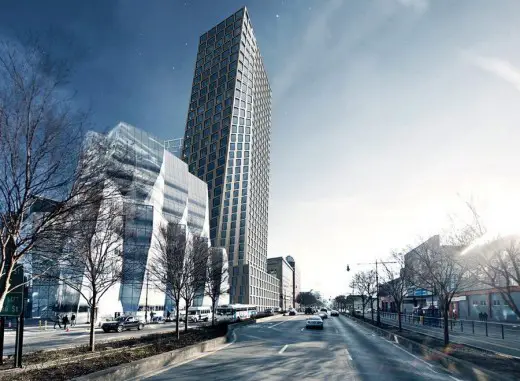
rendering : BIG
2 WTC New York by Bjarke Ingels
Location: West 57th Street, New York City, USA
New York City Architecture
Contemporary New York Buildings
Manhattan Architecture Designs – chronological list
New York City Architecture Tours by e-architect
BIG Bjarke Ingels Group : Practice Profile
New York Architecture
Design Architect: Foster + Partners
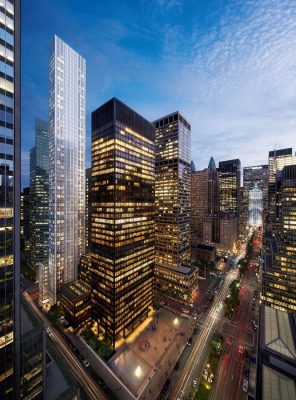
rendering via RFR
Midtown Manhattan Skyscraper Building
Design: Safdie Architects
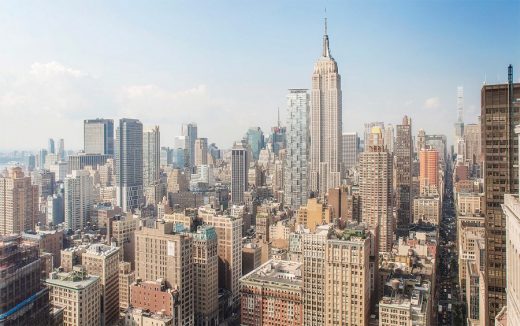
image © Safdie Architects
HFZ Tower Building NYC
New York Architect Studios
West 8th Street Building Manhattan
Museum of Contemporary Art New York – Extension
Comments / photos for the W57 New York City Residential Architecture page welcome

